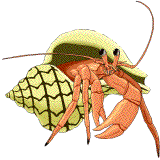
Discovering Galapagos Animals
Unit Topic: The Galapagos Islands
Grade Level: Middle school
Basic Concepts: Survival, Conservation, Extinction, Adaptation
Content Areas: Math, Art, Science, Language Arts, Geography, and Foreign Language
Time: Four three-hour blocks of time
Objectives
Activity
1 
Phase 1: Students will be introduced to various Galapagos animals. Following this, students will choose an animal to research. They may work independently or in groups of up to three students. Students will be given one block of time to start their research. Give the students a guide sheet for research ideas they should keep in mind. (Guide sheet attached).
Materials:
Phase 2: The students will create articles, using the information they have gathered about their animals. The articles will be assessed by peers and by the teacher. The students will work together to create a map that contains the location of each of the animals studied on the various islands. The finished articles and the map will be compiled into a magazine, Discovering Galapagos Animals, for the entire class to enjoy and learn from.
Activity 2
The students will create their animal through the use of paper mache'. Imagination is the limit. The animals can be added to the classroom, in order to produce a meaningful "Galapagos Island" effect.
Materials:
Assessment: The teacher can give the students constant feedback during their research process. Group or individual conferences can be held. The students will receive feedback from their peers and the teacher about the article they write. The teacher and the students can read the Observation Rubric and the Project Rubric to review what is expected.
Evaluation: The teacher will use the Observation Rubric during the research opportunities. The teacher will use the Project Rubric to evaluate the final magazine articles. In order to be successful, students need to receive 3s or 4s on both of the rubrics.
Extensions:
Things to keep in mind while researching:
-which island(s) the animal can be found on
-the animal's diet
-physical attributes, size, weight, life expectancy
-the animal's habitat -is the animal in danger of extinction
-how the ocean affects the animal
-natural predators of the animal
-unique traits
-does this animal have relatives in Wisconsin
Alten, M. (1998, January, February). "A tale of three boobies." International Wildlife, 28, 28-35.
Dorst, Jean. (1967). South America and Central America: a natural history. Random House: New York.
Lemonick, M.D. (1995, October). "Crisis in the Galapagos." Time, 146, 80-82.
Ralling, C. (1979). The Voyage of Charles Darwin. Mayflower Books: New York.
Robinson, M.H. (1997, September). "Here, Birds are Unafraid." Smithsonian, 28, 16-17.
Internet Sites:
http://www.polaris.net/~jpinson/welcome.html
This is the site for the Charles Darwin Research Station. It is a great site that contains information about the Galapagos Islands, in addition to valuable information about some of the animals on the islands including: the giant tortoise, the land iguana, and the dark-rumped petrel.
http://reality.sgi.com/employees/davis/html/
This site was put together by photographer Tom Davis. It contains great images with concise explanations of a variety of animals.
http://www.lonelyplanet.com/dest/sam/ecu.htm
This site was put out on the Internet especially for kids, by the Lonley Planet Tour Guide Company. It gives general and accurate information about Ecuador and the Galapagos. It also does it in the form of a travel guide that describes the equipment needed for traveling to these places.
http://www.gct.org/tourists.html
This site contains information about the various islands that make up the Galapagos. It also gives information about which of the animals lives on what island. This would be very helpful for the students to know while they are doing their projects.
http://web.calstatela.edu/faculty/eviau/edit557/oceans/laureen/ksl.htm
This site gives general information about sea lions. It was constructed to be user-friendly for kids. It also links to other web sites that contain more information.
This site is devoted to the topic of marine turtles. The site is valuable because it contains a web of information about the turtles including: general, various species, and issues that are threatening the turtles.
http://fcdarwin.org.ec/english/el-nino-1.html
This site talks about El Nino, and the effect it is having on the Galapagos Islands. It also contains various tables that demonstrate how El Nino is specifically affecting the animals on the islands.